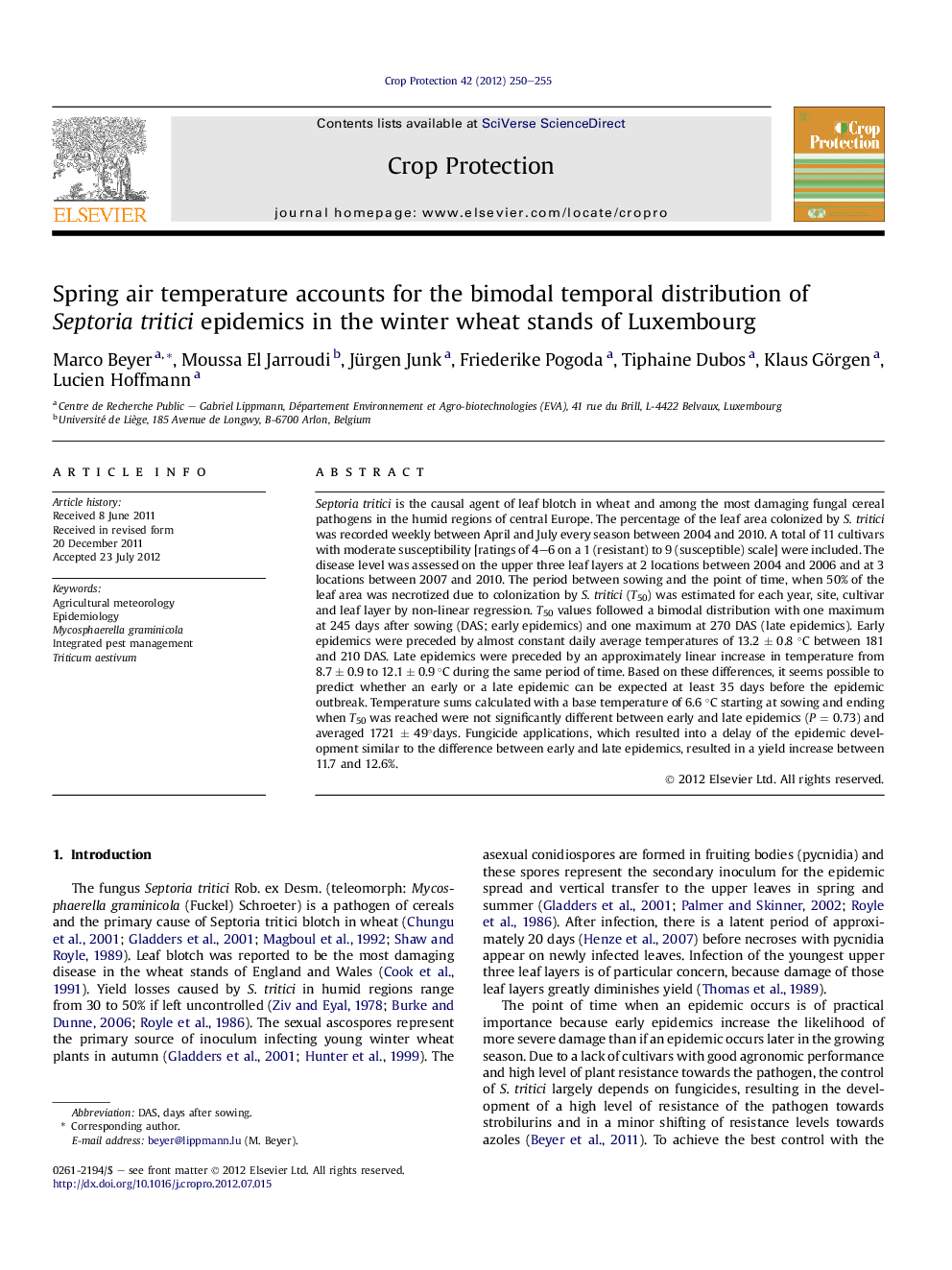| کد مقاله | کد نشریه | سال انتشار | مقاله انگلیسی | نسخه تمام متن |
|---|---|---|---|---|
| 4506171 | 1624345 | 2012 | 6 صفحه PDF | دانلود رایگان |

Septoria tritici is the causal agent of leaf blotch in wheat and among the most damaging fungal cereal pathogens in the humid regions of central Europe. The percentage of the leaf area colonized by S. tritici was recorded weekly between April and July every season between 2004 and 2010. A total of 11 cultivars with moderate susceptibility [ratings of 4–6 on a 1 (resistant) to 9 (susceptible) scale] were included. The disease level was assessed on the upper three leaf layers at 2 locations between 2004 and 2006 and at 3 locations between 2007 and 2010. The period between sowing and the point of time, when 50% of the leaf area was necrotized due to colonization by S. tritici (T50) was estimated for each year, site, cultivar and leaf layer by non-linear regression. T50 values followed a bimodal distribution with one maximum at 245 days after sowing (DAS; early epidemics) and one maximum at 270 DAS (late epidemics). Early epidemics were preceded by almost constant daily average temperatures of 13.2 ± 0.8 °C between 181 and 210 DAS. Late epidemics were preceded by an approximately linear increase in temperature from 8.7 ± 0.9 to 12.1 ± 0.9 °C during the same period of time. Based on these differences, it seems possible to predict whether an early or a late epidemic can be expected at least 35 days before the epidemic outbreak. Temperature sums calculated with a base temperature of 6.6 °C starting at sowing and ending when T50 was reached were not significantly different between early and late epidemics (P = 0.73) and averaged 1721 ± 49°days. Fungicide applications, which resulted into a delay of the epidemic development similar to the difference between early and late epidemics, resulted in a yield increase between 11.7 and 12.6%.
► Septoria tritici epidemics could be clearly grouped into early and late epidemics.
► The period between 181 and 210 days after sowing was identified as predictor.
► Temperatures around 13.2 ± 0.8 °C during this period resulted in early epidemics.
► A temperature increase from 8.7 ± 0.9 to 12.1 ± 0.9 °C during this period resulted in late epidemics.
► Yield of early epidemics was approximately 10% lower compared to late epidemics.
Journal: Crop Protection - Volume 42, December 2012, Pages 250–255